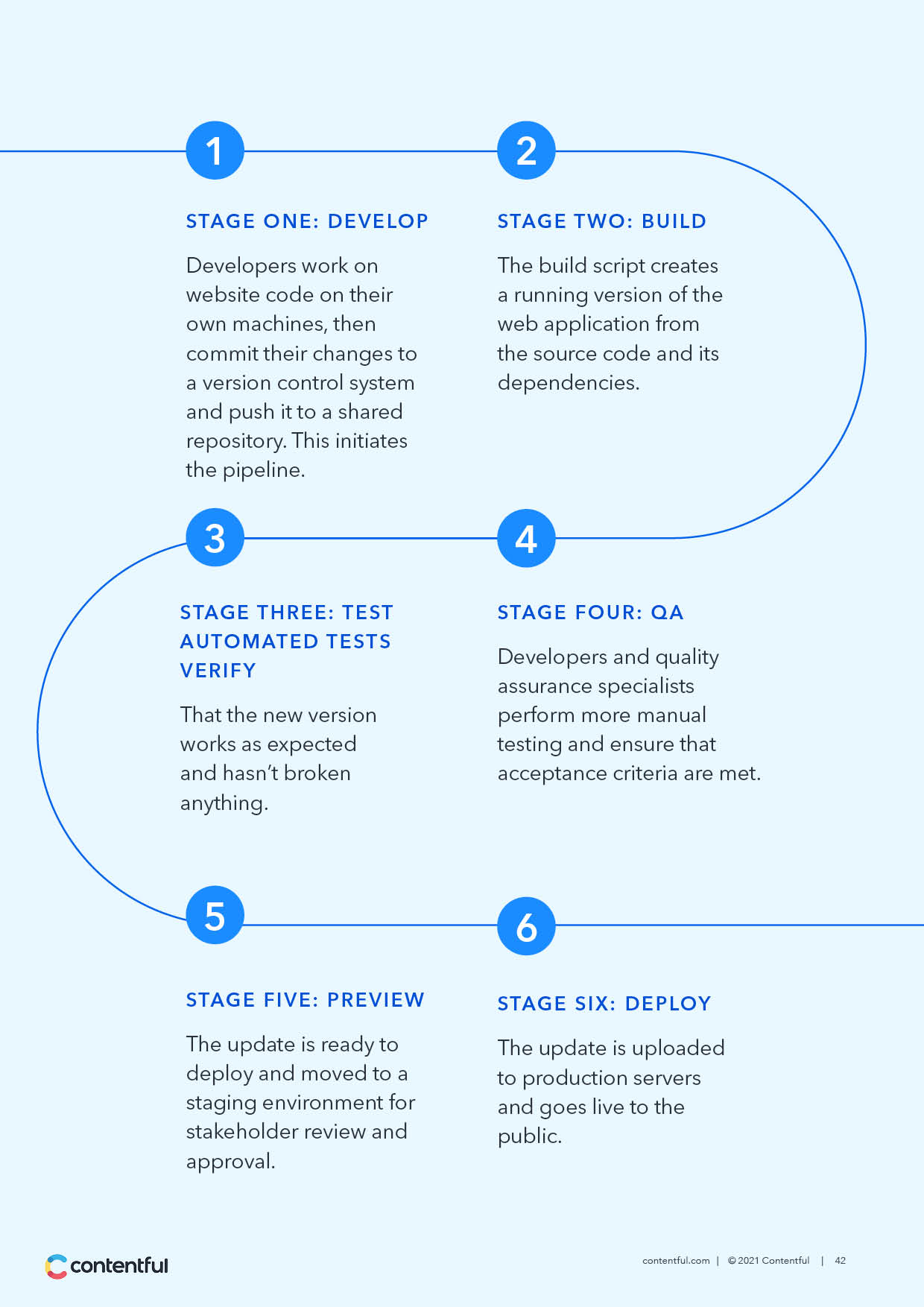The modern website strategy guide
Treat your website like a product and you’ll reach your customers in a whole new way.
Key Facts
Stuck with a static website? Download our web strategy guide for a roadmap to modernize with the help from a composable content platform.

Stuck with a static website? Download our web strategy guide for a roadmap to modernize with the help from a composable content platform.




In our digital-first, digital-fast world, a brand is only as strong — and modern — as its web strategy. Brands reliant on antiquated strategies miss delivering on emerging customer expectations. These older strategies favor pre-scheduled static site releases that serve dated, cookie-cutter experiences. These ignore modern-day user preferences which bend towards differentiated experiences and can drive potential customers away.
In this white paper, you’ll learn how to introduce your brand’s web strategies to modern times to deliver customer-winning experiences.
Here’s a brief overview of the key takeaways you’ll learn in this guide.
The best websites are treated as digital products
Forget annual or biannual website launches. Modern website strategies take an agile approach to this process by considering websites as an evolving digital product instead of a routine project. This model enables organizations to update their online presence and webpages to continue driving business value. Changes in brand, product and service information are bound to happen. When they do, you need a solution in place that’s ready to reflect updates across your brand's entire digital landscape. A modern website strategy ensures edits can be made and deployed quickly without the excessive delays common of scheduled releases.
Crossfunctional teams have a hand in overall success
To support frequent site updates, companies must carve out space and resources to build cross-functional web teams. Ideally, talent should be pulled from product, engineering and marketing teams. Leadership roles within these teams should be reserved for product managers. These stakeholders will work in parallel to push new features and content to the brand’s website to meet business needs.
Composable architectures are preferential to monolithic solutions
A team of capable builders committed to agile methodologies will only get your web strategy so far. The technology these teams use is what allows them to build at scale and speed. A composable tech stack offers a modern, streamlined alternative to complex, rigid and often expensive monolithic solutions. Composable stacks combine best-in-class microservices and are designed to meet a brand’s specific web needs. Brands that adopt composable architectures enjoy the freedom to select technology solutions that fit their workflows, developer preferences and projects. Should any of these change, teams can add, modify or remove tools without breaking the entire site.
A content platform unifies any tech stack
Whether your company is a budding tech startup, small business or an ecommerce powerhouse, content drives your web experience. A content platform, often called a headless CMS, houses content securely in one location. Contentful’s cloud-native, API-first approach supports headless content delivery across channels and devices while offering backend extensibility that integrates with cross-functional teams’ favorite tools and ways of working.
Content platforms help teams work smarter, not harder
Content platforms help teams stay flexible, fast and connected. They mitigate risk and empower developers and creatives to take greater ownership over what they create and ship. In the productivity sector, the parallel workflows that content platforms support play a key role. Teams can avoid messy or lengthy handoffs during different stages of the product. This is largely possible because content creators can write and edit while developers code.
Content models are another part of the puzzle. Content models break assets into a modular structure so that components can be reused and repurposed. In this way, manually recreating assets for new initiatives and diverse channels (smartphones or mobile devices, voice assistants, AR/VR, digital signage) becomes a thing of the past. Teams can say goodbye to copy and pasting content repeatedly or redesigning heavily used assets like landing pages. Less confusion and repetitive manual work encourage productivity and greater user satisfaction.
Content models can be extended to address personas and improve customer experiences
Content platforms exist as more than just frameworks for your web strategy. They can direct and streamline your content strategy and content marketing strategies which might include social media marketing, omnichannel distribution and search engine optimization (SEO). As an API-first platform, Contentful easily integrates with custom or third-party apps, so teams don’t have to leave the platform to access bespoke capabilities. They also don’t have to rummage around for the content they need — everything is in a single, easy-to-use hub. To get the most out of your content models and content platform while meeting business goals, Contentful’s App Framework and App Marketplace enable teams to quickly pull in a new tool or build out capabilities directly within the platform.
Building content models is straightforward in Contentful
Because Contentful® Composable Content Platform is built for all members of digital teams, building content models is simple. Use them to construct innovative web designs (like an eye-catching homepage) or create content that supports diverse digital marketing initiatives. In general, content modeling has three steps. First, create a space, next create and define your content type, and finally, populate it with content. Then, you can shift your focus from web strategy to delivery strategy to ensure content is carried across customer touchpoints.
For in-depth instructions on building content models and setting up workflows or delivery pipelines within Contentful, read “The modern website strategy guide.”


